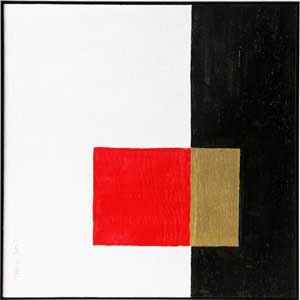The Advancing Edge - London - 2007

© Robert Wright
Following an exhibition held in Hereford earlier in 2007 as part of h-Art 2007, The Advancing Edge was Robert Wright's third solo London exhibition.
The Medieval mystic, Meister Eckhart, once said that, "to touch our creativity is to touch our divinity". We tend to think of "real" theology as being only language-based but in reality many of us meet God in our senses before meeting him in words - think of the thrill of a glorious sunset, or one of the many tragedies we see in the news. Of course, we may not meet God there, and many people never do! But when St. John of the Cross said, "God created the arts in order that life might be held together by them, so that we should not separate ourselves from spiritual things", he was reminding us of truth that Robert Wright also seeks to explore in these intense, intimate paintings, because he believes that there is more to being human than language can explain. Robert hopes that there can be some sort of coming together of mystery and illumination in these paintings: that we can understand something of what St. Paul prays for in the Letter to the Ephesians (1.18): "May God enlighten the eyes of your heart ...".
Kandinsky believed that painting, like music, should be expressive of the artist's 'inner life', the deepest intuitions and feelings, without recourse to "reproduction of natural phenomena". So, he said, "one should not approach art by means of reasoning and understanding, but through the soul, through experience." For Robert, the "Edge" can be a sharp, critical point of illumination and the title the advancing edge suggests an imminent insight, but even here is ambiguity, for it could also mean a gradual, deepening, growing insight.
Usually bright and colourful, these paintings radiate both calm and composure and whilst some may find them too precise they do speak of harmony and order as Robert explores both the inner life and the paint medium itself. In a way, it is ironic to use the visual to describe spiritual matters of the heart, but because the paintings do not seek to represent any particular object they can, given attentiveness, represent something 'other' and it is to be hoped that the paintings are "large" enough to reflect whatever you, the viewer, bring to them.
This exploration invites us to use a language that perhaps we are not too familiar with but because Robert has great sympathy with Mark Rothko's dictum that "a painting lives by conversation" he is always interested in the viewer's point of view or interpretation, as we approach 'The Advancing Edge'.
